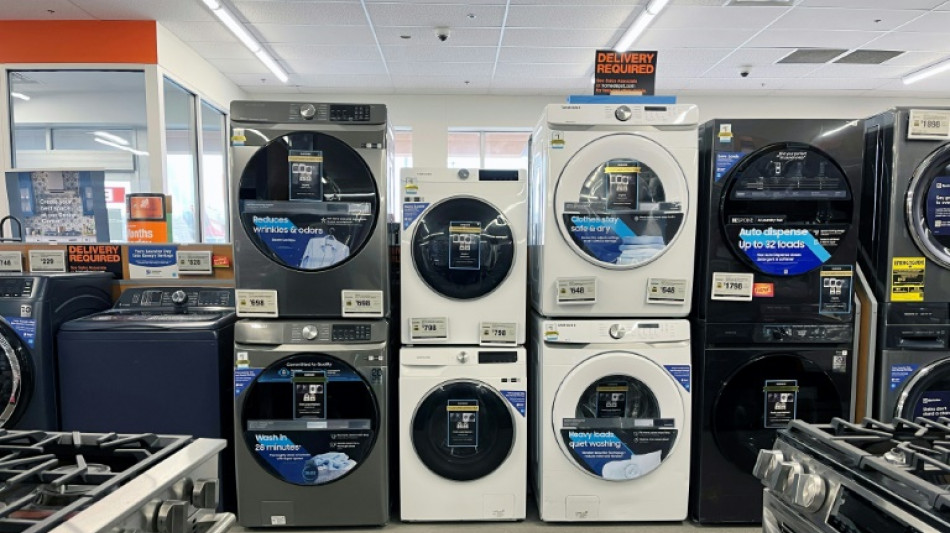

US consumer inflation cooled in April as Trump rolled out tariffs
US consumer inflation cooled slightly in April, but analysts warned prices could spike in the coming months as businesses come to grips with President Donald Trump's sweeping "liberation day" tariffs.
The data covers the early days of Trump's new levies against most countries -- including steep duties on China -- which spooked financial markets and raised fears of a spike in prices.
The US president has since reversed some of the duties and paused others, helping to soothe nervous investors.
The consumer price index (CPI) eased to 2.3 percent in April from a year ago, a tick below the 2.4 percent figure recorded in March, the Labor Department said in a statement.
"Inflation is down thanks to President Trump!" White House Policy Communications Director Jacki Kotkiewicz wrote on X in a message that was reposted by a White House account.
In a statement, the Democratic Senator Elizabeth Warren took a different view on the data.
"Consumers and businesses will feel little relief from President Trump folding to Xi Jinping and are bracing for supply chain disruptions and even empty shelves," she said.
The April CPI release was the smallest 12-month increase since February 2021, and was slightly lower than the median estimate from surveys of economists conducted by Dow Jones Newswires and The Wall Street Journal.
"This may be the low point in 2025," Nationwide senior economist Ben Ayers wrote in a note shared with AFP. "As tariff costs increasingly flow into consumer prices, we expect a jump in the CPI this summer, pushing the annual reading back above three percent."
"Looking ahead, higher tariffs will lead to a renewed inflation impulse," EY chief economist Gregory Daco said in a statement.
But, he added, the recent tariff detente with China announced over the weekend means that impulse will be slightly weaker than previously expected.
Prices rose 0.2 percent from a month earlier, with "more than half" of the increase due to a 0.3 percent rise in shelter costs, according to the Labor Department.
Excluding volatile food and energy costs, the inflation rate was 0.2 percent from a month earlier, and 2.8 percent over the past 12 months.
The monthly figure was slightly below expectations, while the annual figure was in line with forecasts.
US stocks were mixed in early trading.
- 'Too early' to tell -
Despite the good news overall, there were nevertheless some signs of Trump's tariffs in the data.
The index for household furnishings and operations increased 1.0 percent in April after standing still in March, the Labor Department said.
In a recent investor note, economists at Deutsche Bank had flagged that this data point would provide a good indication of how some "import-heavy categories" could be affected by tariffs.
But, they added, it was still "too early for tariffs to be evident in the aggregate numbers."
The energy index -- which fell sharply in March -- increased 0.7 percent in April, according to the Labor Department, spurred by a sharp rise in natural gas and electricity prices.
The gasoline index decreased 0.1 percent over the month on a seasonally-adjusted basis, and by 11.8 percent over the past 12 months.
The data will likely be well-received by the Federal Reserve as it weighs when to cut interest rates.
Futures traders see a roughly 90 percent chance that it will extend its recent pause at the next rate decision in June, holding its benchmark lending rate at between 4.25 percent and 4.50 percent, according to data from CME Group.
S.Sadoun--al-Hayat




